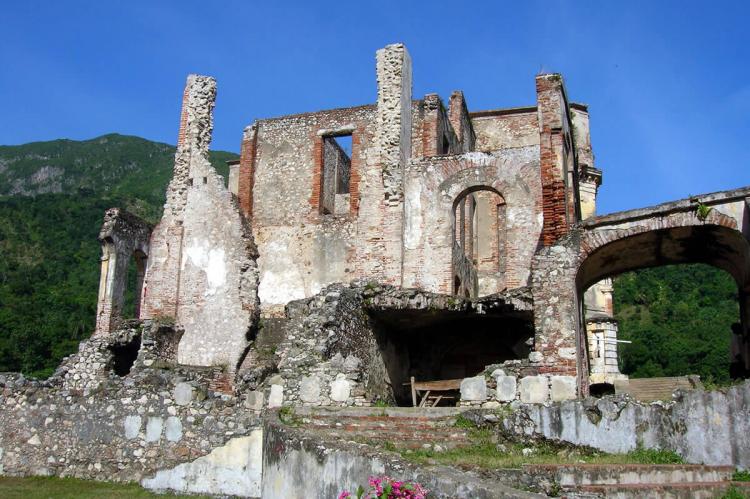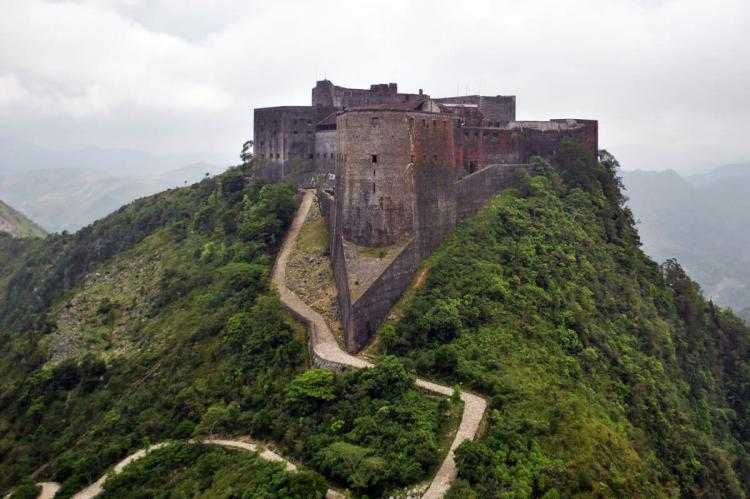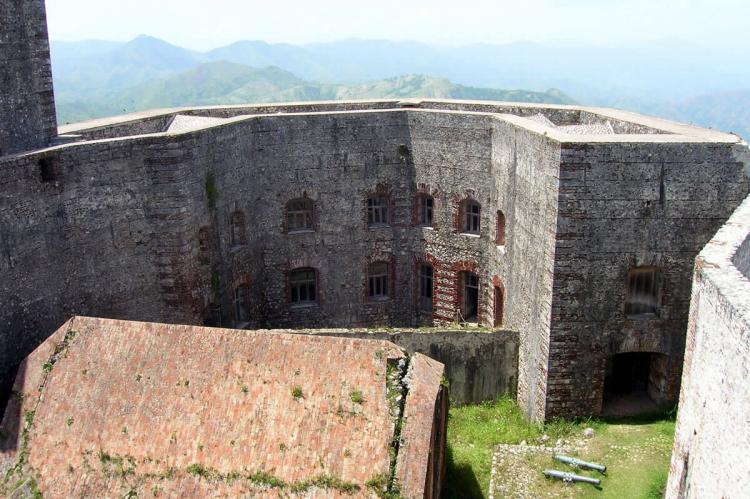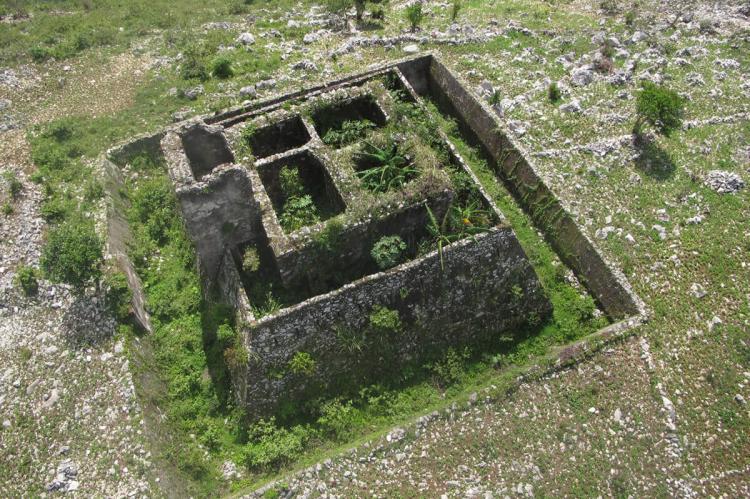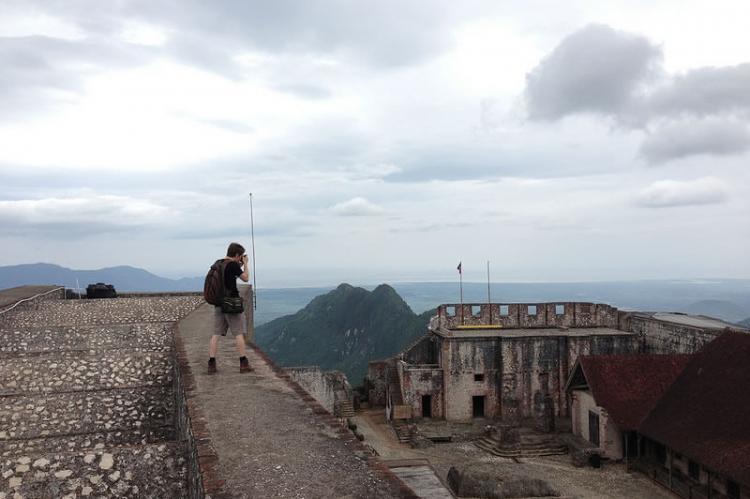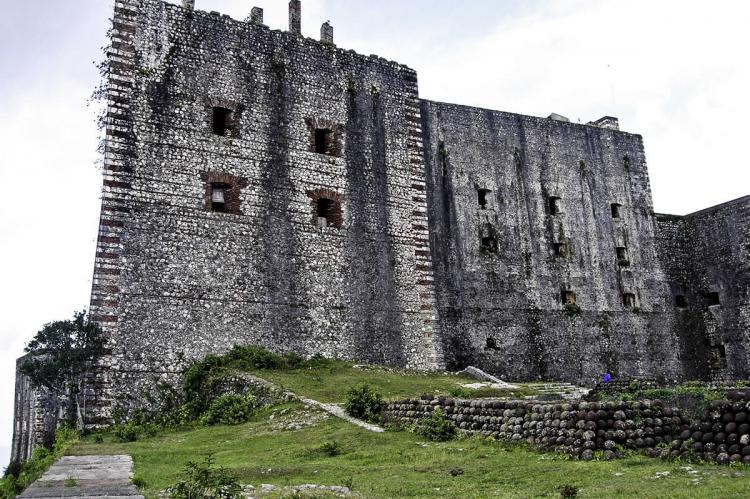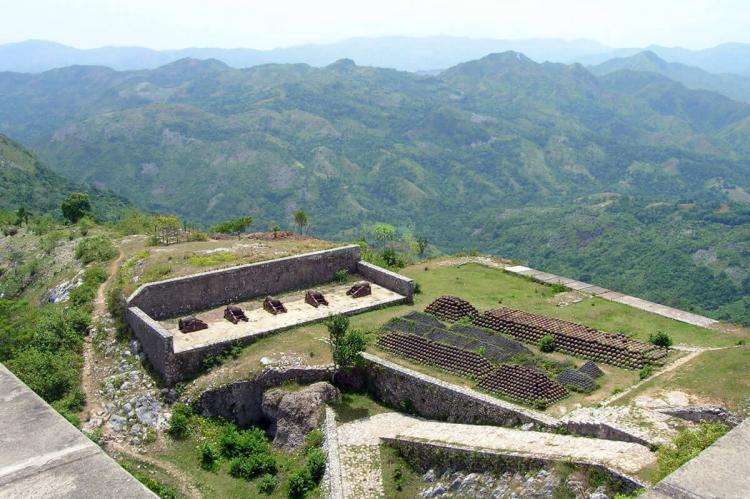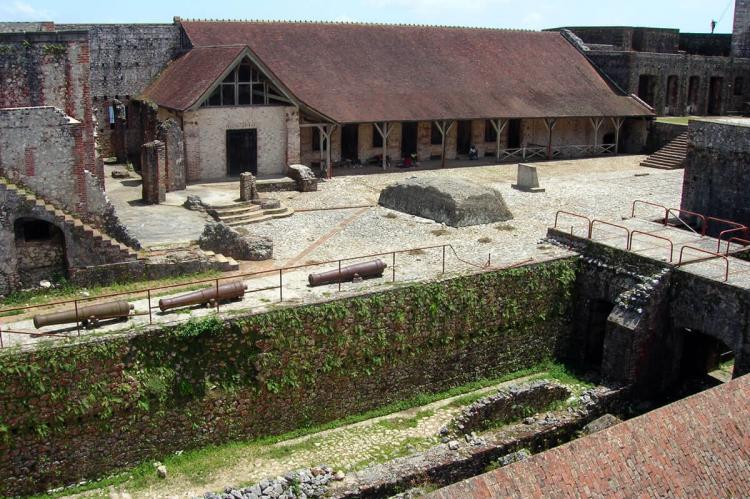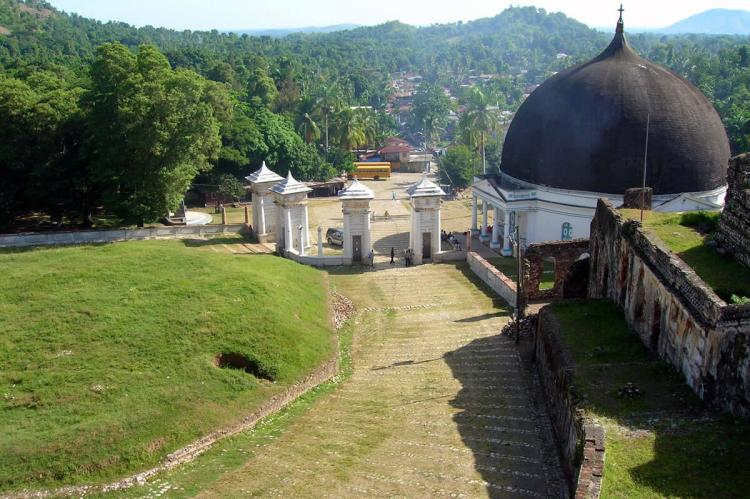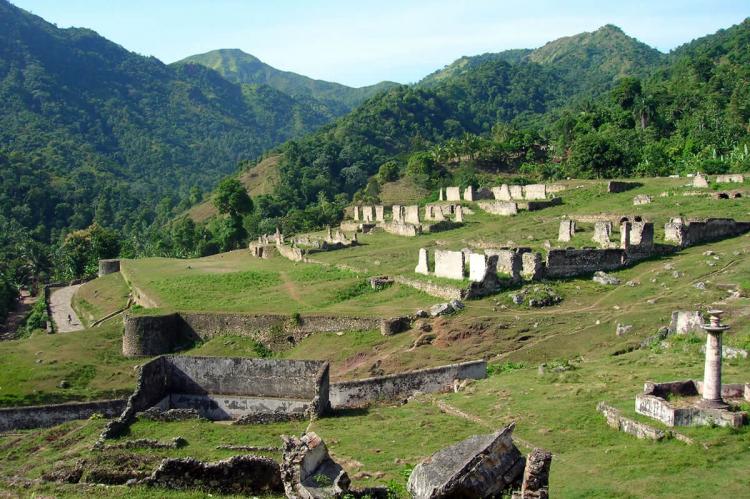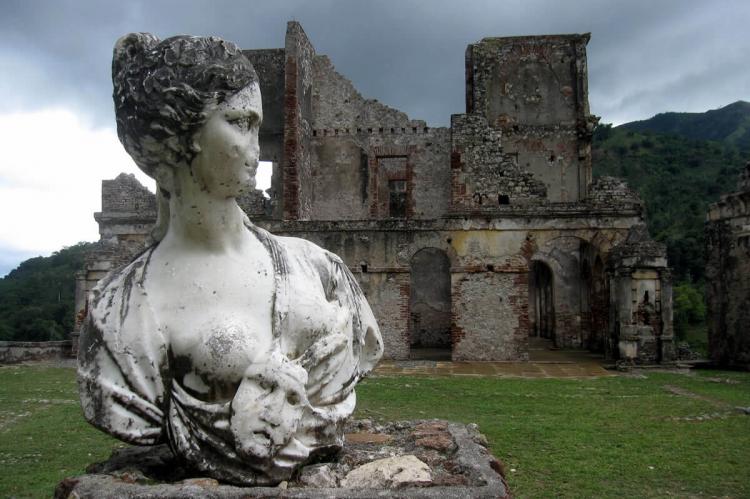Preserving Haiti's Rich Heritage: The National History Park - Citadel, Sans-Souci, Ramiers
National History Park - Citadel, Sans-Souci, Ramiers is a testament to the Haitian people's resilience and determination towards freedom as they overcame centuries of colonial oppression. Set amidst tropical forests and mountains, it's a reminder of Haiti's rich culture and journey to independence.
Preserving Haiti's Rich Heritage: The National History Park - Citadel, Sans-Souci, Ramiers
Nestled amidst the rugged peaks of the Massif du Nord in Haiti lies a testament to the island's tumultuous past and enduring spirit: the National History Park - Citadel, Sans-Souci, Ramiers. Spanning an expansive area of 25 square kilometers (9.65 square miles), this UNESCO World Heritage Site is a poignant reminder of Haiti's rich cultural heritage and storied journey to independence. The park, set against the backdrop of lush tropical forests and majestic mountains, is a living testament to the resilience and determination of the Haitian people, who have overcome centuries of colonial oppression and adversity to forge their path.
Origins and Significance
The National History Park traces its origins to a presidential decree issued in 1978, which aimed to preserve and protect Haiti's historical and architectural treasures. At its heart lay the monumental ensemble of the Palace of Sans-Souci, the formidable Citadelle Henry, and the historic Ramiers site. These landmarks, born from the crucible of revolution, symbolize the indomitable spirit and resilience of the Haitian people in their quest for freedom.
The story of the National History Park is deeply intertwined with Haiti's turbulent history, characterized by centuries of colonial oppression and enslaved resistance. On January 1, 1804, Jean-Jacques Dessalines, a towering figure in the struggle for liberty, proclaimed the independent Republic of Haiti, marking the culmination of a long and arduous journey to freedom. It was a watershed moment in world history, as Haiti became the first state to emerge from a successful slave revolt, inspiring oppressed peoples around the globe.
In the aftermath of independence, the newly liberated nation sought to commemorate its hard-won freedom by erecting monumental structures that would endure for generations. The Citadelle Henry and the Palace of Sans-Souci emerged as architectural marvels, testing Haiti's resilience and determination to forge its destiny. These iconic landmarks, situated amidst the breathtaking landscapes of the Massif du Nord, serve as enduring symbols of Haitian independence and sovereignty.
Today, the National History Park - Citadel, Sans-Souci, Ramiers stands as a living testament to Haiti's vibrant cultural heritage and unwavering commitment to freedom and self-determination. As visitors explore its ancient ramparts and crumbling ruins, they are transported back in time to an era of revolution and rebirth, where the echoes of history resonate with the spirit of a nation.
Perched majestically atop the rugged summit of Pic Laferrière, the Citadelle Henry, also revered as the Citadelle Laferrière, stands as a towering testament to Haiti's indomitable spirit and unwavering commitment to freedom. Commissioned under the visionary leadership of General Henri Christophe, this formidable fortress represents the pinnacle of Haiti's military prowess and architectural brilliance.
Constructed in the early 19th century, the Citadelle was conceived as a bulwark against external threats, safeguarding the fledgling republic and its hard-won independence. Its strategic position, commanding panoramic views of the surrounding landscapes, bestowed upon it an unparalleled advantage in defense and surveillance, making it one of the most awe-inspiring fortifications of its time.
The Citadelle's commanding presence is palpable, its towering stone walls and bastions exuding an aura of strength and resilience. As visitors ascend its steep ramparts, they are greeted by panoramic vistas that stretch as far as the eye can see, a testament to the strategic foresight of its architects. From this vantage point, the rugged peaks and verdant valleys below unfold in a breathtaking tapestry of natural beauty, offering a glimpse into Haiti's rich cultural and historical tapestry.
Today, the Citadelle Henry stands not only as a formidable fortress but also as a poignant symbol of national pride and unity. Its enduring legacy serves as a reminder of Haiti's tumultuous past and its unwavering commitment to liberty and self-determination. As visitors traverse its storied corridors and explore its ancient battlements, they are transported back in time to an era of revolution and resilience, where the spirit of freedom burned brightly in the hearts of the Haitian people.
Palace Sans-Souci: A Monument to Majesty
Nestled gracefully in the shadow of the Citadelle Henry, the Palace of Sans-Souci emerges as a beacon of opulence and grandeur, epitomizing the aspirations of King Henri Christophe and the Haitian monarchy. This architectural marvel, Conceived in the early 19th century as a testament to royal power and authority, stands as a symbol of Haiti's rich cultural heritage and enduring legacy.
Commissioned by King Henri Christophe, the Palace Sans-Souci served as the focal point of the Haitian monarchy, housing the royal residence and administrative headquarters of the kingdom. Its majestic halls and terraced gardens, adorned with fountains and sculptures, bore witness to the king's vision of a prosperous and enlightened nation.
Despite weathering the ravages of time, including damage inflicted by natural disasters and neglect, the Palace Sans-Souci exudes timeless beauty and grace. Its elegant Baroque architecture, characterized by ornate arches and intricately carved facades, is a testament to its builders' skill and craftsmanship.
As visitors wander through its hallowed halls and meandering gardens, they are transported back to an era of regal splendor and sophistication. The palace's rich history and cultural significance offer a glimpse into the vibrant tapestry of Haitian society, where art, architecture, and tradition converge to create a legacy of unparalleled magnificence.
Today, the Palace Sans-Souci is a poignant reminder of Haiti's storied past and its enduring resilience in the face of adversity. Its haunting beauty and timeless elegance continue to captivate the hearts and minds of all who venture within its hallowed walls, ensuring its legacy will endure for generations.
Ramiers: Echoes of the Past
Tucked away within the confines of the National History Park lies the Ramiers site, a hallowed ground steeped in the echoes of Haiti's turbulent quest for independence. The relics of a bygone era lie amidst the verdant landscape and towering peaks, lie the remnants of a bygone era—a testament to the indomitable spirit of enslaved Africans who dared to defy the shackles of oppression.
As visitors traverse the rugged terrain of Ramiers, they are transported back in time to an era of strife and upheaval, where the clash of empires and the rumble of cannons echoed through the valleys. The remnants of a residential ensemble and fortified redoubts bear witness to the arduous struggle for freedom, serving as silent sentinels to the resilience of those who dared to dream of a better tomorrow.
Against the majestic backdrop of the Citadelle Henry, these weathered ruins tell a poignant tale of resistance and defiance, etched into Haiti's collective memory. Each stone, each crumbling wall, bears testament to the sacrifices made by countless souls who laid down their lives in the pursuit of liberty.
As the sun sets over the horizon, casting its golden glow upon the ancient ruins, the spirits of the past seem to stir, whispering tales of courage and fortitude to all who would listen. In the tranquil stillness of Ramiers, amidst the rustle of leaves and the gentle hum of the wind, the echoes of history reverberate through the ages, reminding us of the enduring legacy of those who dared to fight for freedom.
Conclusion
In conclusion, the National History Park - Citadel, Sans-Souci, Ramiers is a testament to Haiti's enduring legacy of freedom and resilience. From the towering ramparts of the Citadelle to the elegant ruins of the Palace Sans-Souci, this UNESCO World Heritage Site offers a glimpse into the island's tumultuous past and vibrant cultural heritage. As Haiti continues to forge its path forward, the National History Park remains a symbol of hope and inspiration for future generations, preserving the legacy of those who dared to dream of a better tomorrow.
